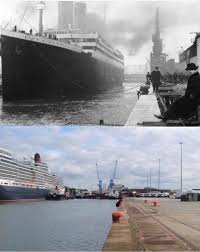Understanding the Legacy of the Titanic Tragedy

Introduction
The RMS Titanic, a name synonymous with tragedy, has captivated minds for over a century. Its sinking on April 15, 1912, claimed the lives of more than 1,500 passengers and crew, marking it as one of the deadliest maritime disasters in history. The Titanic’s story transcends mere shipwreck; it is a tale of human ambition, technological hubris, and the quest for safety in maritime travel. As we reflect on its historical significance, it is important to understand the implications of the disaster on maritime regulations and its influence on popular culture.
The Tragic Voyage
The Titanic was deemed “unsinkable” and represented the pinnacle of early 20th-century engineering. Yet, this belief contributed to a series of poor decisions that ultimately led to the ship’s demise. On that fateful night, the Titanic struck an iceberg in the North Atlantic, resulting in a catastrophic failure of the hull. Life-saving measures were insufficient, with only 20 lifeboats available for over 2,200 people onboard.
The tragedy ignited a media frenzy, providing an immediate glimpse into the class divisions of the time, as many first-class passengers survived while the majority of third-class passengers perished. In the aftermath, public outrage prompted investigations that reshaped maritime law, leading to the establishment of the International Convention for the Safety of Life at Sea (SOLAS) in 1914, which mandated lifeboats for all passengers and increased safety protocols.
Impact on Maritime Safety
The legacy of the Titanic has profoundly influenced maritime safety regulations. The rules instigated by the disaster have resulted in continuous enhancements in shipbuilding technology, navigation systems, and training for crew members. Today’s regulations mandate comprehensive safety drills and increased lifeboat capacity, ensuring that such a tragedy will not be repeated.
Cultural Reflections
The story of the Titanic has permeated popular culture, inspiring numerous films, books, documentaries, and exhibitions. James Cameron’s 1997 film “Titanic” rekindled interest in the historical event, showcasing the human stories intertwined within the tragedy. Memorials and museums worldwide honour the legacy of victims and survivors, serving as reminders of the need for vigilance in safety and preparedness.
Conclusion
The Titanic represents a pivotal moment in maritime history, embodying the intersection of innovation, human error, and the lessons learned from tragedy. Its legacy is one of caution and remembrance, reminding us of the importance of prioritising safety in all realms of travel. As we continue to explore advancements in maritime technology, we must never forget the lessons taught by the Titanic—a testament to the enduring human spirit in the face of adversity.








